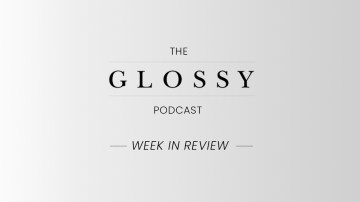Subscribe: iTunes | Stitcher | RSS
On this week’s episode of the Glossy Podcast, Hilary Milnes, senior reporter, joins managing editor Shareen Pathak on the show floor at the NRF’s Retail’s Big Show, the industry’s flagship event, to talk about the biggest retail trends for 2017.
Edited highlights below.
The use of real-time data
In a presentation at NRF on Sunday, Intel retail head Michelle Tinsley called it “fast data.” Big data has the reputation of being intangible, but retailers are finally understanding how to use it on a real-time basis. For example, if a customer picks up a shirt, takes it to a fitting room and doesn’t buy it, retailers can figure out why. Orchard Mile, for example, is using real-time data to figure out how to rearrange product assortment online, depending on who is shopping.
Retailers struggle with silos
Things take time to change. Junior marketers often understand what needs to be changed, but to get that up to the people making decisions is hard — and that’s why retailers are often slow to invest in things that will improve their businesses.
Instagram remains the platform of choice
Despite companies using Snapchat and everyone touting it as the next big platform, Instagram still remains the No. 1 platform for the retail industry. Thanks to the platform adding more features like outbound links, NRF attendees were still hot on Instagram. One thing that is changing: The use of Instagram stars. Melissa Davis, svp at Shopstyle, said that brands still don’t pick influencers who are authentic or who work with the brand — and the influencer “bubble” means that the entire enterprise has been commoditized. Megan Rose, the founder of Rocksbox, a monthly jewelry subscription service, said influencers drove 70 percent of the brand’s growth early on, but the growth is leveling off.
Sustainability may mean more personalization
Retailers are moving the sustainability talk to on-demand creation of products so that things are more in-line with customer demand. That’s where data comes in: Retailers are looking into more ways to accurately forecast, in order to minimize both costs and waste. Eileen Fischer, for example, is demo-ing a 3D-printed sweater that is essentially designed for and by a customer, and is also less wasteful.



